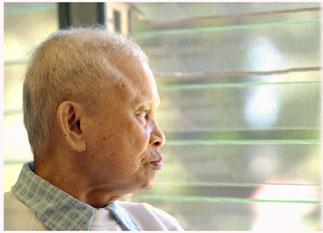
Vol. 77, No. 8, August
2004
Abuse and Neglect in Long-Term Care Facilities
As our population ages, the civil justice system will be called on
more frequently to represent and protect our elderly citizens. Lawyers
who serve as advisors, guardians ad litem, estate planners, and
litigators, will be asked to protect the civil rights of victims of
abuse and neglect. To better serve your elderly clients, read what state
and federal laws regulate long-term care facilities, the warning signs
of abuse and neglect, and the potential legal claims and remedies
available to victims and their families.
 When children are being abused or neglected in
Wisconsin's licensed day care settings, most people know to contact the
police or social services. When vulnerable, disabled, or elderly adults
are being abused, neglected, or exploited in Wisconsin's residential
settings, most people do not know where to turn or even whether to
intervene. Wisconsin's vulnerable citizens deserve appropriate treatment
and protection across their lifespan, regardless of the facility in
which they reside.
When children are being abused or neglected in
Wisconsin's licensed day care settings, most people know to contact the
police or social services. When vulnerable, disabled, or elderly adults
are being abused, neglected, or exploited in Wisconsin's residential
settings, most people do not know where to turn or even whether to
intervene. Wisconsin's vulnerable citizens deserve appropriate treatment
and protection across their lifespan, regardless of the facility in
which they reside.
The elderly population in the United States is expected to double by
2025; of that, the "frail elderly" population is expected to nearly
triple.1 Since 1997, the number of available
licensed nursing home beds has decreased by more than 14 percent.2 Those residing in nursing homes have complex
treatment needs. In contrast, the capacity in regulated assisted living
facilities has grown by approximately 60 percent since 1994.3 The elderly comprise the majority of individuals
residing in assisted living settings. Other persons who reside in
assisted living facilities include those with mental illness, dementia,
or Alzheimer's disease; physical disabilities; developmental
disabilities; alcohol or other drug dependency; terminal illnesses,
traumatic brain injuries, and AIDS; and pregnant women and correctional
clients. The range of service and treatment needs is broad.
Members of the "sandwich generation" - adults who provide care for
both their children and aging parents - are more media savvy,
technologically literate, and politically active than were past
generations. As a result, they've drawn more attention to the issues of
quality care. Congress has held public hearings and released a number of
reports addressing the problems that have been brought to light
concerning care in regulated residential settings. In a recent report,
the U.S. House of Representatives Committee on Government Reform noted
that almost one in three nursing homes were cited for abuse violations
between 1999 and 2001.4 Many of the
violations caused serious harm to nursing home residents or placed them
in jeopardy of death or serious injury.5
Many issues facing vulnerable, elderly, and disabled clients affect
lawyers' practices, regardless of practice areas. Estate planners should
be concerned not just about protecting assets, but understanding
long-term care systems and alternatives. Guardians ad litem should
understand the changing landscape for care, treatment, and living
alternatives available to their wards. Prosecutors and defense attorneys
need to understand the different forms of abuse, neglect, and
exploitation perpetrated in residential health care settings. All
practitioners should understand the various requirements and interplay
of state and federal law and the options available in order to respond
appropriately to clients' concerns about abuse, neglect, or financial
exploitation in residential health care settings.
The following three articles provide a framework for practitioners
facing these issues. The first provides an overview of available options
within the civil justice system. The second addresses the state's
regulatory responsibilities and responses to preventing abuse and
neglect in residential health care settings. The third addresses
criminal prosecutions of abuse, neglect, and financial exploitation of
Wisconsin's vulnerable citizens.
1U.S. Bureau of the Census,
Wisconsin's Population Projections: 1995 to 2025.
2Dep't Health & Family
Services, Bureau of Quality Assurance http://dhfs.wisconsin.gov/provider.
3Dep't Health & Family
Services, Bureau of Quality Assurance, Assisted Living Section.
4Minority Staff, Special
Investigations Division, Committee on Government Reform, U.S. House of
Representatives, Abuse of Residents Is A Major Problem In U.S. Nursing
Homes (July 30, 2001).
5Id.
Wisconsin
Lawyer
